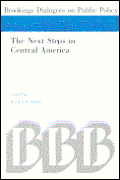The year 1989 witnessed a dramatic transformation in the world’s political landscape, particularly in the events in Germany, the Soviet Union, and the nations of Central and Eastern Europe. Policymakers and pundits have been preoccupied with the implications of these great event, notwithstanding the more recent Gulf crisis and the talk of a New World Order. Meanwhile, partly in response to their own internal logic, as well as to the U.S. policy initiatives, events in Central American began to take a different turn. The stunning upset victory of Violenta Barrios de Chamorro and her opposition coalition in the Nicaraguan elections of February 1989-and, significantly, the acquiescence by the Sandinistas in the election result-most dramatically marked the turnaround in Central America.
In the face of the triumph of democracy in Nicaragua, the ouster of Noriega form power in Panama, and the apparent slowdown in military activity by the insurgents in El Salvador, the region appeared to be on the brink of a new epoch. Democracy, privatization of the economy, an regional peace seemed to be within reach. Astounding as they were, these events faded all too quickly form public attention in the United States as they were eclipsed be the transformation in Eastern Europe. The inevitable return to a more sober reality, if not quite to disillusionment, began to set in among observers in Central America.
This volume takes an in-depth look through the experiences and studies of experts who witnessed and observed these events from both Central and North America. Their essays reveal how close peace and Democracy was to a tarnished region and describe the unexpected downfall that overwhelmed Central America as a whole.
Author

